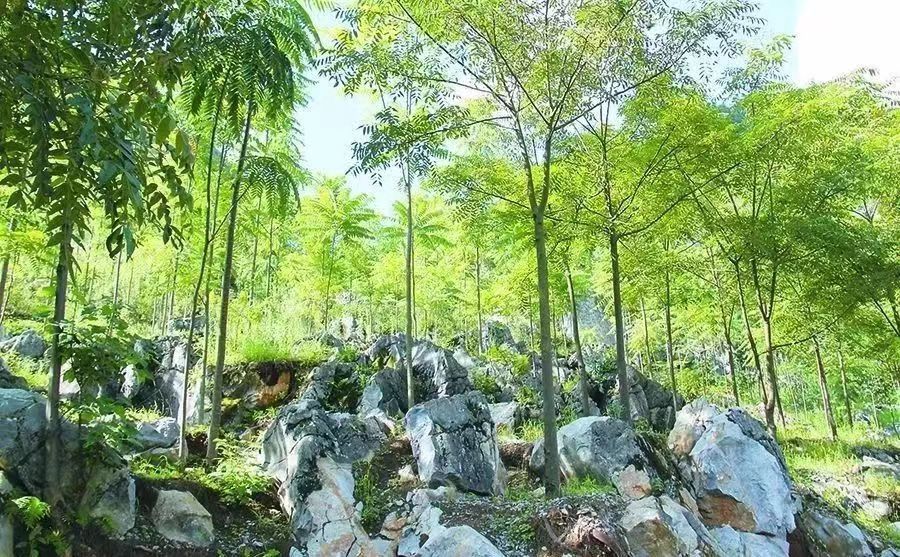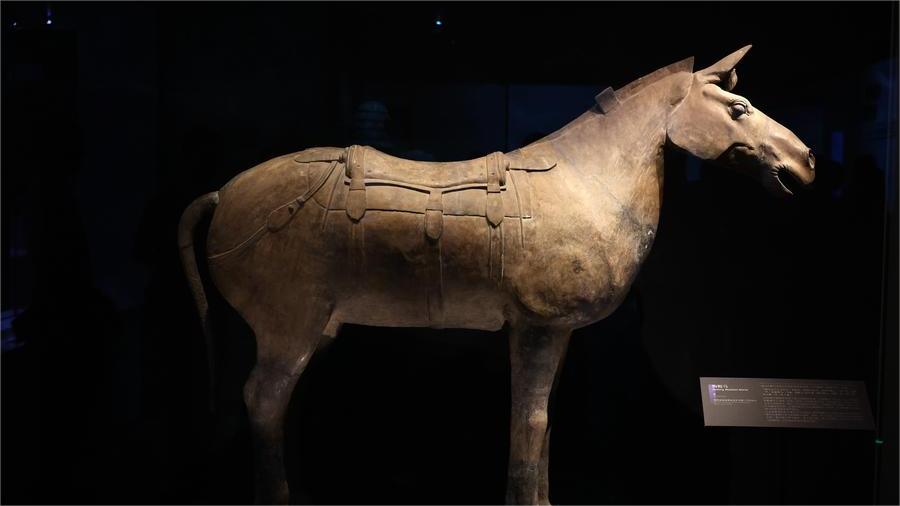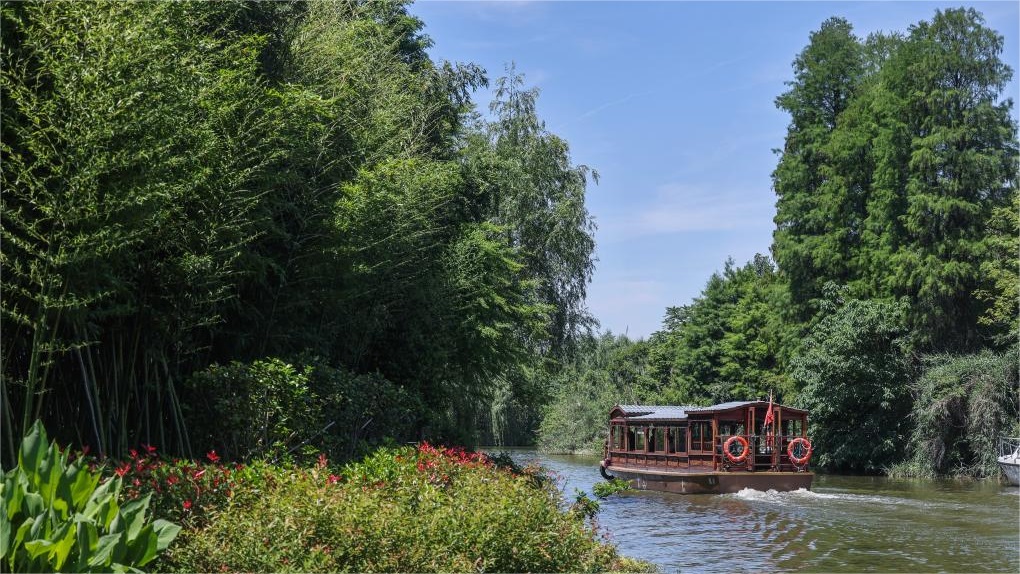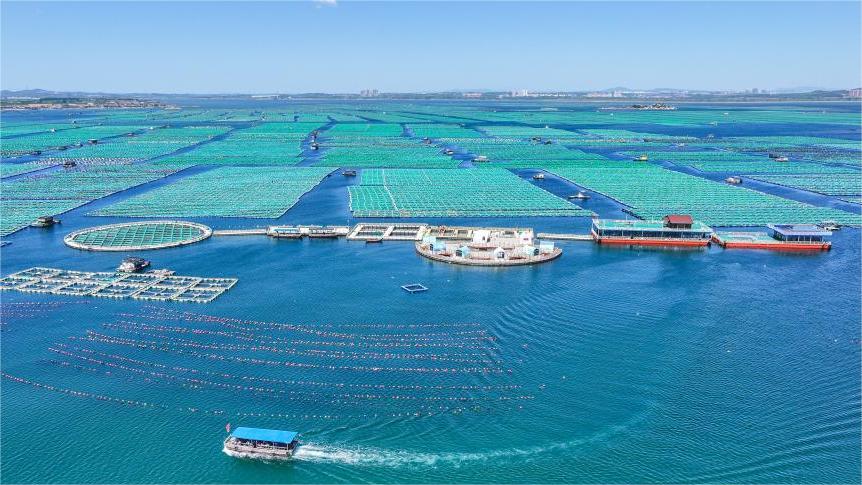S China's Guangxi addresses rocky desertification, brings prosperity to locals
South China's Guangxi Zhuang Autonomous Region has treated rocky desertification on 515,300 hectares since it implemented a comprehensive program to control rocky desertification starting in 2008.
Since 2021, the autonomous region has harnessed 108,600 hectares of rocky desertification land, with the vegetation coverage rate of rocky-desertification land reaching 45.8 percent.
Li Rongguang, a 67-year-old villager, has planted trees for 35 years in Nonglatun, which was once haunted by rocky desertification, in the Guling neighborhood of Guling township, Mashan county, Nanning city.
"As long as I am still standing, I will keep planting trees," Li said.

Photo shows trees planted in a rocky desertification area in Pingguo county, Guangxi Zhuang Autonomous Region. (Photo/Department of Forestry of Guangxi)
Since the 1960s, Nonglatun has been restoring the ecology through afforestation.
Over the decades, generations of villagers have planted over 16,000 bamboos, cypresses, and camphor trees. The forest coverage rate increased from 32.1 percent in 1980 to 97.5 percent in 2023, and has brought over 210 hectares of rocky-desertification land back to life.
Nonglatun's changes reflect Guangxi's achievements in combating rocky desertification.
According to a national survey on rocky desertification in 2021, the rocky desertification land area in the autonomous region dropped by 31.5 percent, or 14.5 percent of the total reduction nationwide, said Cai Zhongping, director of the forestry bureau of Guangxi. Guangxi ranked first in reducing areas of "severely" and "extremely severely" rocky desertification, and the ecological quality of vegetation in these areas.
Technology has given an advantage to Guangxi's efforts to tackle rocky desertification. The Huanjiang observation and research station for karst ecosystems under the Chinese Academy of Sciences is located in Tongjin village, Dacai township, Huanjiang Maonan Autonomous County of Hechi city.
Since 1994, researchers have studied the ecosystems in karst areas in the county, and have provided scientific support for rocky desertification control.
Through long-term experiments, the observation and research station has selected 32 plant species, established a high-quality germplasm resource repository of 20 mu (1.33 hectares) and a 12,000-mu demonstration area which combined the ecological and economic benefits with mixed forests, grasslands, and medicinal plants.
Over the years, Guangxi has conducted scientific experiments on rocky desertification control technologies, selected and cultivated local tree species suitable for rocky-desertification areas, promoted practical techniques, and explored more than 10 treatment models. These have created a virtuous cycle of sustainable development.
The efforts to control rocky desertification have also driven income growth for local people through the planting industry and eco-tourism.
Yangshuo county in Guilin city has promoted the planting of a type of locust tree to tackle rocky desertification.
Qin Guipeng, deputy head of the villagers' committee of Tangjia village in the county, who once worked outside his hometown, returned to grow orah mandarins, a thick-skinned citrus fruit, and locust trees.
"Last year, the price of locust tree flowers reached 50 yuan ($6.91) per kilogram, which was pretty high," said Qin.
In recent years, Guangxi has advanced rocky desertification prevention and control through measures such as establishing protected areas and cultivating featured crops. Notably, several "rocky desert parks" in the autonomous region have attracted throngs of visitors.
Photos
Related Stories
- NW China makes efforts to combat desertification
- China, Mongolia open joint center to curb desertification
- Chinese official urges deepening international cooperation to fight desertification
- Tree planting controls rocky desertification in SW China
- Interview: China's anti-desertification experience conducive to global green development, UN official says
- Int'l students experience China's anti-desertification work
Copyright © 2024 People's Daily Online. All Rights Reserved.









